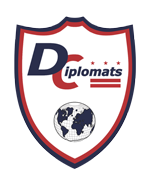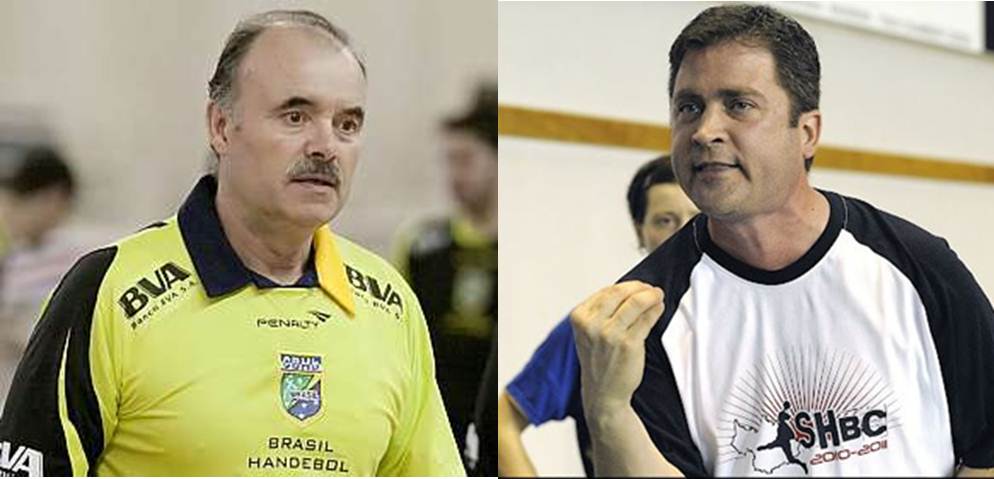
American sports leagues have successfully invaded Europe. It’s high time for European handball to invade America.
In Part 7, I listed several reasons why for many years European handball entities did little to develop the American market. In this part, I highlight how while Europe has opened its eyes to the possibilities, many of its initial efforts have faltered. (Part 1) (Part 2) (Part 3) (Part 4) (Part 5) (Part 6)
A European Awakening
For many years European handball entities weren’t very much engaged in the development of Team Handball in the U.S. The litany of reasons for this include basic indifference, a belief that the U.S. should develop Team Handball on its own, market competition from other sports, the amateur focus in Europe, an unwillingness to invest, not understanding the American marketplace and ineffective American Federation appeals for help. The good news is that while these challenges still exist they are largely becoming passé as professional European leagues and Federations have awakened to the possibility of American revenue streams.
This has happened primarily for a couple of reasons. First, European handball executives couldn’t have been blind to an American sports invasion in Europe. Every kid wearing a Dirk Nowitzki, Dallas Mavericks jersey is one not wearing a Pascal Hens, Hamburg jersey. Every NBA TV broadcast means a little less interest and money being spent on a Handball Bundesliga broadcast. Ouch. That’s hitting the old pocketbook. But, it also surely wasn’t lost upon some handball executive that if the NBA can sign big TV contracts and get kids to wear NBA jerseys, then maybe Handball could do the same thing to the U.S. market. Or as the South Korean women’s national team often demonstrates, sometime the best defense is a good offense.
Secondly, while there’s sure to be some trepidation in regards to a risky expansion in reverse, European soccer has proven that it can indeed be done. What once was a trickle of minor TV contract deals to get the European foot in the door has evolved into “no kidding” bidding wars. Case in point was the recent NBC purchase of the English Premier League (EPL) rights for $80-85 million/annually. This was four times what Fox was paying previously and, get this, you couldn’t even find any soccer matches on TV anywhere in the U.S. not too long ago. That’s right a bidding war for something nobody, but a few Expats would have watched a dozen years ago. Sacrilege of sacrilege, these sports networks are even reporting soccer scores on the bottom trailer during broadcasts of American Football games. I guess I’m an old timer, but I still do a double take when I see Norwich 2, Aston Villa 1; Man U. 3, Reading 0; scroll across the screen. And call me crazy, but if the EPL can get $85 million, surely the German Bundesliga can get a meaningful fraction of that at some point. Even 1/100th of $85 million is better than no contract at all.
Stumbles Along the Way
So, with an ongoing American sports invasion in Europe and soccer proving that America could also be plucked, European entities have dipped their toes in the U.S. market. As often happens, however, there has been some false starts and failures. Most notably, live events on U.S. soil have only had marginal success. The French League’s final four cup in Miami (2009) was well staged, but had dismal attendance. The Poland-Germany match in Chicago (2010) was better attended, but didn’t create the desired post match buzz. In hind sight it’s clear that these events didn’t fully take into account the basic awareness problem the sport faces in the U.S. You can’t just simply fly to the states and expect Americans to buy tickets for a sport the bulk of them don’t even know exists. Well, I guess you can, but there are surely more effective ways to spend your money at this stage of the sport’s development in the U.S.
Showcases on U.S. soil can make sense, but only if they are structured to the current market. A perfect example of that is the New York City Tournament and All Star Game held the past 3 years as part of a New Year’s Eve package primarily for German tourists; a much smaller event which has a chance to grow. No, in order to properly stage a big event, you first need to grow your market. Case in point, are the NFL regular season matches in London that now sell out 80,000 strong. The NFL plotted this out over many years, slowly but surely developing a fan base in the UK that were hungry to see a live match.
And how was such a fan base developed? Through TV, of course. In fact, it’s kind of amazing when you think about it. American Football had no historical background whatsoever in the UK. Only a handful of people even play it there today, yet now there’s even talk of a London franchise.
Finally, on TV, but on the right channels?
Encouragingly, European entities have recently been able to break into the U.S. TV market. The German Bundesliga was first on the scene with matches available first on the “My Sports Germany” Network, and now with Univision Deportes. The EHF Champions League has also been available, first with MHz and now with beIN Sport and Univision Deportes. The bad news, however, is that these networks are way off the beaten path. In many parts of the U.S. they are either not available or require an a la carte or top tier purchase option with a Cable or Satellite TV provider. In other words, die hard fans can now seek out and find Team Handball on TV, but the likelihood of new American fans stumbling upon Team Handball is pretty slim.
I’m not privy to the negotiations that resulted in Team Handball rights being sold to beIN Sport and Univision Deportes, so I have no idea how much these networks paid and whether any other networks were courted. Further it’s unclear as to whether other factors such as a network’s market reach factored into the awarding of TV rights. Let me put it another way. If ESPN (the #1 behemoth in the U.S. with near total market reach) showed even the slightest inkling of interest (FYI: this suggests they had an inkling) into broadcasting the sport the EHF and/or HBL should have been prepared to bow down and serenade ESPN HQ in Bristol, Connecticut. Such a possibility would be the ultimate game changer for the sports development in the U.S. Seriously, every other commentary on this website would start with sentences like, “Before ESPN broadcast Team Handball or “After ESPN….yadda yadda yadda.” Instead of a glorious two weeks of attention every 4 years during the Olympics there would be a constant stream of new fans and players picking up the sport.
A job too important to give to a middleman
Of course, I don’t know how beIN Sport and Univision Deportes were chosen for broadcast. Perhaps, they were the only ones interested. I do know, however, that in the recent past, that this website actually broke the news to one European Handball entity that their matches were now being broadcast in the U.S. How could that possibly be, you might ask. Well, it was certainly something that had me scratching my head. It turns out that the primary reason for this was the farming out of TV rights to a 3rd party to distribute and make deals in foreign markets. As I understand it, the 3rd party then gets compensated for each deal that’s made around the world. Again, I’m not privy to the contract specifics, but such an arrangement probably makes it more likely that the highest bidder is going to win. After all, the middleman has a short term contract and wants to make money.
The trade off of less money (heck, even paying ESPN) for greater exposure is simply not there for a middleman. That’s not to say that money shouldn’t play a factor, but the right, smaller deal now could lead to better deals later. Case in point was the EPL decision to go with NBC when reportedly beIN Sport was offering more money. According to NBC Executive, Jon Miller, EPL Representatives “understand how a property can be hamstrung if it doesn’t have distribution.” I’m not so sure, however, that the same can be said for European Handball representatives.
Going further, there’s probably a pretty good case to me made that the Europeans should have at least 1 person, if not a fully staffed office section, 100% devoted to the growth of foreign markets like the USA, China and India. For sure, the U.S. Leagues have done so. In fact, it wouldn’t surprise me if the staff for NBA Global is bigger than the combined staffs of the EHF, IHF, HBL and the Liga Asobal.
Closing Thoughts on the Awareness Problem
I’ve gotten some negative feedback regarding my characterization of the awareness problem the sport faces in the U.S. I’ve been told that I’m simply a Negative Nelly for exaggerating the problem and giving it too much prominence. Essentially, by exposing the problem I’m making too strong of a case to Europeans and TV executives that it’s really mission impossible and they would foolish to waste time and money on something that’s never going to happen.
As you might expect I don’t buy that argument for a second. I’ll just re-emphasize the crazy opportunity this awareness shortcoming presents. The fact that such a great sport, tailor made for TV viewing has around 300 fans in this country is really unfathomable. Despite all the challenges and obstacles I firmly believe that this sport will become a part of the American Sports landscape. It’s not a question of if, but when?
So, I’ve now covered the underlying reasons why the U.S. didn’t qualify for the Olympics. Namely the U.S. hasn’t had the funding/resources and that there’s a basic awareness/marketing problem which precludes the ability to secure more funding/resources. Next, I’ll tackle some management/leadership shortcomings that have at times exacerbated the problems that USA Team Handball has faced.
(Editor’s note: At this time I haven’t delved into these shortcomings. This currently is the last part of this series, but it may continue at some point in the future.)

























